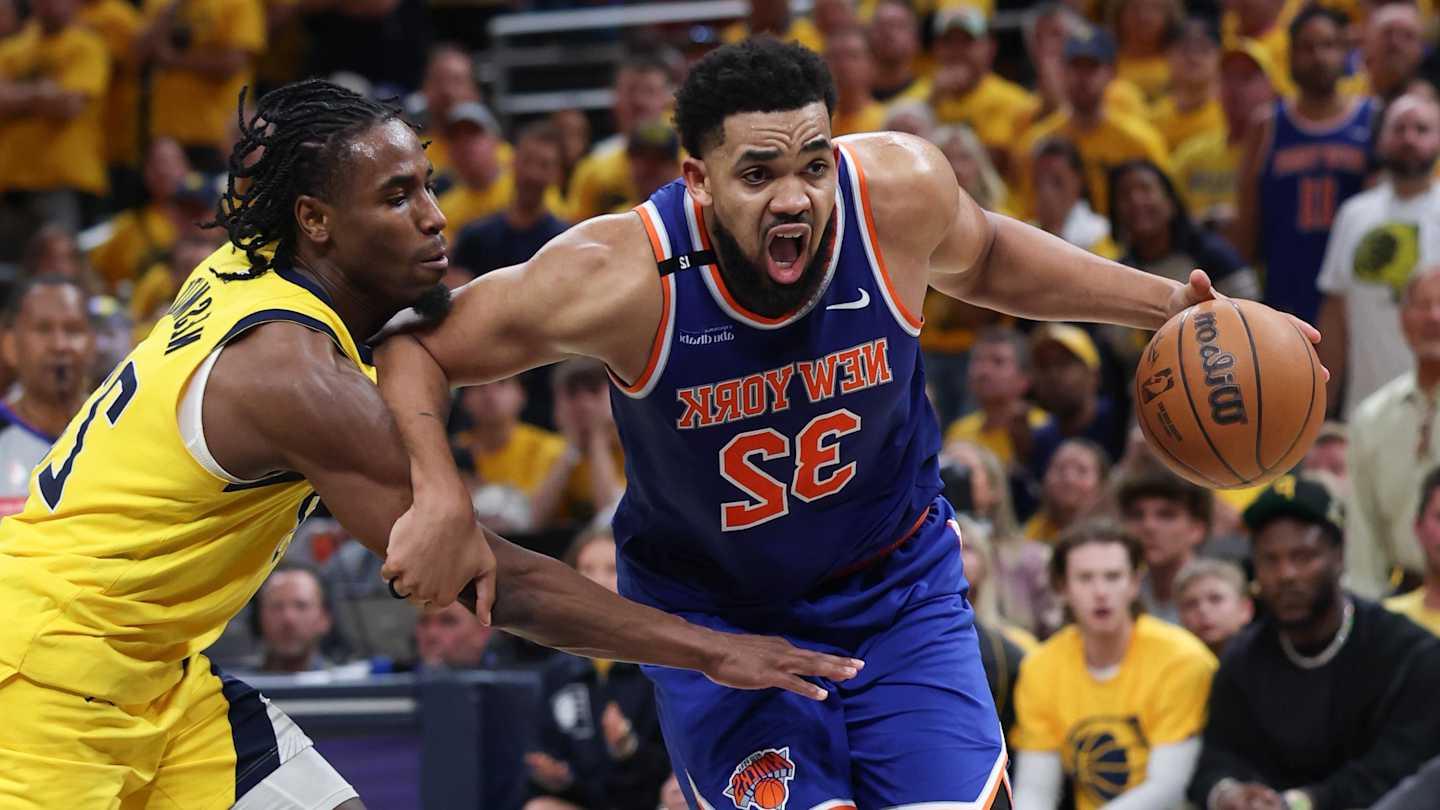TubiTV Just Hit 200 Million Users – Here’s Why
10 Perfect-Score Shows Buried on Prime Video Right Now
The stage is set for the NBA Finals, featuring a showdown between the Oklahoma City Thunder and the Indiana Pacers starting this Thursday evening. The Thunder and Pacers progressed to the finals by defeating the Minnesota Timberwolves and New York Knicks in their respective conference finals.
The $3.99 Streaming Service With 500+ Oscar Winners Nobody Knows About
Cancel These 3 Subscriptions Before November 1st – Here’s Why
The conference finals offered a vivid contrast in drama and style of play. The Pacers vs. Knicks series was particularly thrilling, beginning with a remarkable comeback victory for Indiana in Game 1, highlighted by an unforgettable moment from Tyrese Haliburton. Although the quality of play declined as the series progressed, the matches remained tight and fiercely competitive up until the final moments of Game 6. In contrast, the Thunder vs. Timberwolves series lacked excitement, with OKC dominating three out of the five games convincingly. Minnesota’s surprising 40-point win in one game was a brief highlight in an otherwise predictable series dominated by the Thunder.
Despite this, both the Thunder and Pacers have advanced, leaving the Knicks and Timberwolves to reflect on their seasons as they enter the offseason. Continuing our analysis from previous playoff rounds, here’s what the eliminated teams have learned from their experiences in the conference finals.
New York Knicks
Lesson learned: The Jalen Brunson, Karl-Anthony Towns pairing is a playoff problem
The Knicks faced a challenging but ultimately surmountable series against the Pacers, a loss that will linger as a painful memory. However, this season was largely a success, demonstrating that the team’s potential has not yet been fully tapped for championship contention.
Following significant trades to acquire Mikal Bridges and Towns last offseason, the Knicks achieved several milestones, including winning over 50 games, securing a top-three playoff seed, defeating the reigning champions, and coming close to reaching the NBA Finals. Although they fell short of a championship, this season is not to be viewed as a failure but rather as a significant progression and a foundation for future success.
Looking ahead, the Knicks are well-positioned to be serious contenders for a championship in the near future. The team may see further changes this offseason as they aim to build on a solid foundation that includes two high-level scorers and two elite wing defenders.
While the overall outlook remains positive, a closer examination reveals several areas for improvement within the roster. These issues are generally minor and can be addressed with modest adjustments by the players or coach Tom Thibodeau. However, the pairing of Brunson and Towns presents a significant challenge, particularly in the playoffs, where their defensive shortcomings become more apparent.
Despite their offensive effectiveness during the regular season, the playoffs exposed their defensive vulnerabilities, leading to a negative net rating when they shared the court. The Pacers exploited this weakness, especially during the 146 minutes that Brunson and Towns played together in the conference finals, resulting in a -6.9 net rating.
The Knicks’ success when Brunson and Towns played separately suggests that adjustments may be necessary to optimize their lineup. However, given their high offensive output, finding a balance that also addresses their defensive issues will be crucial for postseason success. This presents a challenge but also an opportunity to creatively address these overlapping weaknesses.
Minnesota Timberwolves
Lesson learned: Julius Randle is a tough evaluation
The Timberwolves’ playoff journey was a mix of highs and lows. They started strong, defeating the Los Angeles Lakers in the first round and capitalizing on an injury to Steph Curry to beat the Golden State Warriors in the second round. However, they met a formidable Oklahoma City Thunder team in the conference finals and were quickly eliminated.
The Timberwolves’ playoff run, although ending abruptly, highlighted the team’s potential. They took advantage of favorable matchups and demonstrated a level of talent and cohesion that suggests a promising future. However, their inability to compete against a stronger opponent in the Thunder has left them with a bitter end to an otherwise successful season.
This postseason has particularly spotlighted the complex decision regarding Julius Randle’s future with the team. Acquired in a major trade involving Karl-Anthony Towns, Randle’s integration into the team was slow, and his scoring average dropped. However, he showed significant improvement in the playoffs, demonstrating his potential to be a key player for the Timberwolves.
Randle’s acquisition in September came at the cost of the franchise mainstay Towns. His integration took time; his points per game decreased from 24.0 last season to 18.7 this season, marking his first season since 2019–20 that he didn’t average 20 per game. He was more efficient from the floor but required almost the entire season to adjust to playing alongside Anthony Edwards as the Wolves worked to figure out how to navigate the court without Towns’s ability to space out defenders. The collective talent on the floor enabled Minnesota to do so without losing many games; Randle had the luxury of time to mesh his game with his teammates.
Then the playoffs began, and Randle excelled. The powerful forward averaged 22.6 points per game while shooting 52.9% on twos and 39.3% on threes against the Lakers. Randle was even more impressive against the Warriors despite a significant drop in three-point percentage, averaging 25.2 points per game while hitting over 60% of his attempts inside the arc. He was everything the Wolves thought they were acquiring when they made the tough decision to move on from Towns: a switchable scoring forward whose physicality helped control the game on both ends. Randle even improved as a passer in the opening rounds, posting 5.9 assists per game leading into the conference finals.
But then they faced the Thunder. Whether due to personnel, scheme, or just a terrible stretch from Randle himself, he was a shadow of his former self in the Wolves’ five-game elimination. After being the only Minnesota player to perform well in Game 1, Randle was held to fewer than 10 points in two of the following four games. Despite a flawless Game 3 in terms of turnovers, he still finished the series with 18. All told, the Timberwolves were outscored by 24 in Randle’s 157 conference finals minutes, and that doesn’t really tell the full story of just how sharply his play downturned against OKC’s defense.
It was a dramatic speedrun of the Randle experience. When he’s at his best, he is a tremendous asset, talented and productive enough to be as much as the second-best player on a championship team. When Randle is bad, he’s bad, a total black hole on both ends who doesn’t do much to hide his displeasure at how things are going. It’s not a great bet to believe that’s going to change, either, given this marked Randle’s 11th year in the NBA.
The forward has a player option this offseason and the Wolves could end up facing a fork in the road with few clear answers. If Randle opts out, do they go all-out to re-sign him given the cost to bring him to town? Is it worth paying him a big contract for the good times when the bad times are as bad as we saw in the conference finals? Can Minnesota replace his production to the extent opposing defenses don’t double- or triple-team Edwards, which was clearly a viable defensive strategy this past season? Conversely, if Randle does not opt out, do the Wolves stand pat or do they use his contract to make another big change and bring in a more reliable option?
Until the playoffs started, it seemed like the odds slanted toward the Wolves moving on from Randle in some capacity. His inconsistent shooting doesn’t make him a clean fit and he hasn’t proven terribly dedicated to doing the little things when the shot isn’t falling. But for two glorious playoff rounds, Minnesota saw what life was like for Edwards and the rest of the roster when Randle was smashing through defenses in high-leverage situations.There are few easy choices for NBA teams to make in the offseason. Thanks to his playoff showing, the Timberwolves face a rather tricky one with Randle.
Similar posts:
- Knicks Close to Snagging Karl Anthony-Towns in Blockbuster Deal, Sources Say
- Julius Randle’s Shocking Reaction to Knicks Trade Revealed!
- NBA Insiders: Timberwolves Triumph in Karl-Anthony Towns Trade with Knicks!
- Shai Gilgeous-Alexander Hits Career Playoff High in Thunder’s Game 4 Victory!
- Timberwolves Seal Nine-Figure Deal with Julius Randle!

Mike Johnson is a passionate news writer with a keen interest in current events. With over a decade of experience in journalism, he has a talent for uncovering the stories that matter most. Mike’s insightful articles and in-depth analyses have made him a trusted voice in the industry. He thrives on staying ahead of the news curve, providing readers with timely and relevant information. Whether it’s breaking news, politics, or social issues, Mike’s dedication to the craft ensures that his readers are always well-informed.

